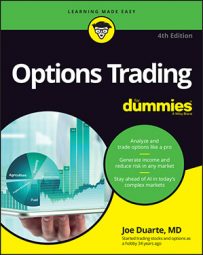- Offset the option.
- Continue holding the option.
- Exercise the option.
Offsetting the option
You offset an option by liquidating your option position, usually in the same marketplace that you bought the option. If you want to get out of an option before its expiration date, you can try to sell it for whatever price you can get. Doing so either enables you to take your profits or reduces your potential loss by the amount you receive for the option.As long as you bought your option in an active market, other investors usually are willing to pay for the rights your option conveys. The key, of course, is how much they’re willing to pay.
Your net profit or loss for this option is determined by the difference between what you originally pay in premiums, commissions, and other transaction costs minus the premium you receive when you liquidate the option after deducting commissions and other transaction costs.
Holding the option
If your option is not yet in the money but you still believe it may get there, you can continue to hold the option until the exercise date. If you’re right, you can exercise the option before the expiration date or liquidate at a later date, which means to buy or sell the option before the expiration date at some time in the future. If you’re wrong, you risk the possibility that you won’t find a buyer or that you’ll have to let the option expire and take a loss that is equal to the amount of the premium, commission, and transaction costs you paid.Some traders take an even riskier position by buying options that are deeply out of the money for just pennies a share. Even if these options never grow any nearer to being in the money, as long as they move in the right direction, the premiums will rise. Although this strategy isn’t recommended , you can make profits as long as you’re able to sell the option before its expiration date.
Options decline in value as they get closer to their expiration dates, so if you think you’ve made a mistake and the market moves against your position, bite the bullet as soon as possible and try to liquidate your option to minimize your losses.
Exercising the option
You can exercise an option any time prior to its expiration date, as long as you’re trading in American‐style options. You don’t have to wait until the exercise date to exercise an American‐style option. (Some option contracts sold in the United States are European‐style, which can be exercised only on the expiration date.) Exercising an option means- Buying the underlying asset when you own a call
- Selling the underlying asset when you own a put

